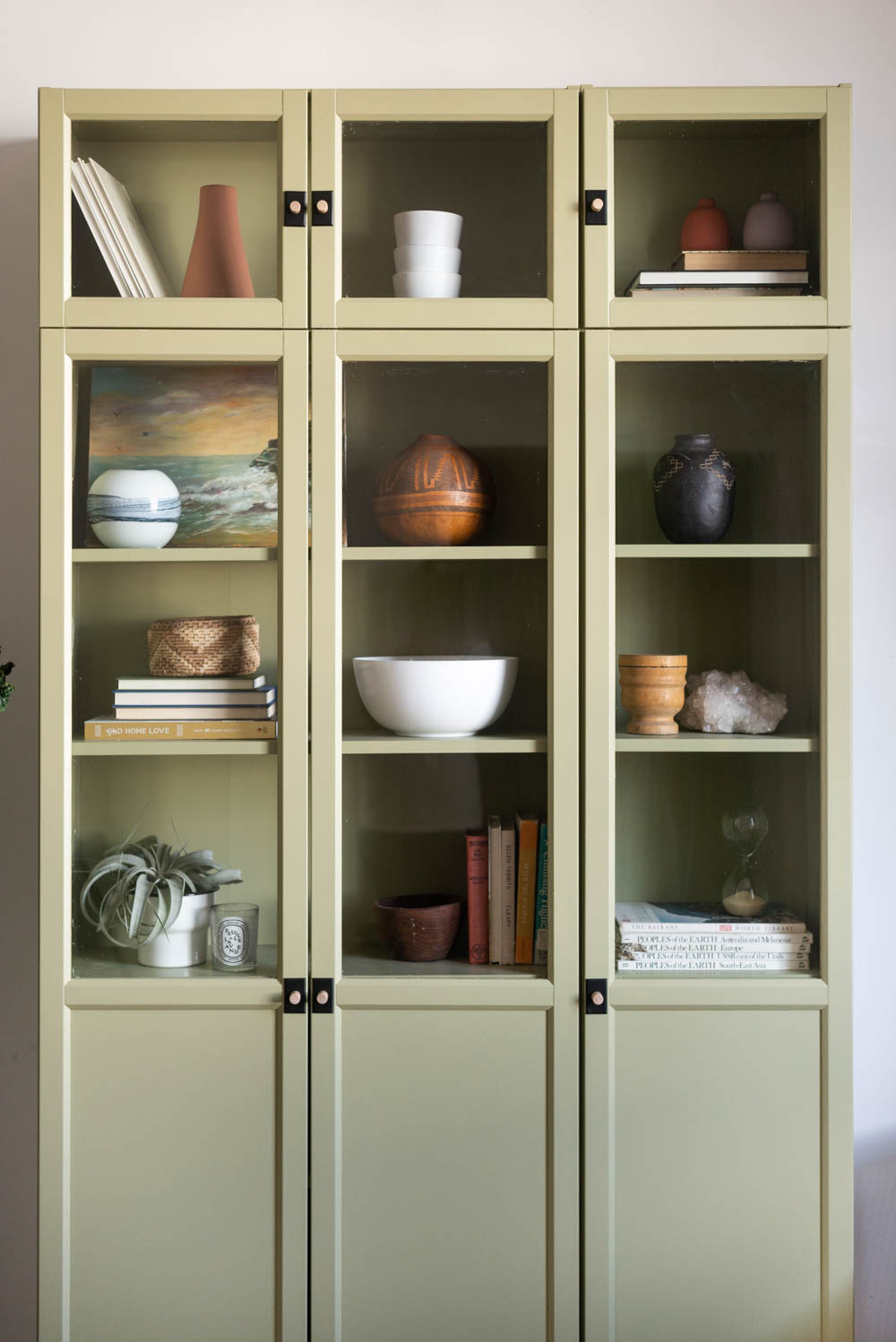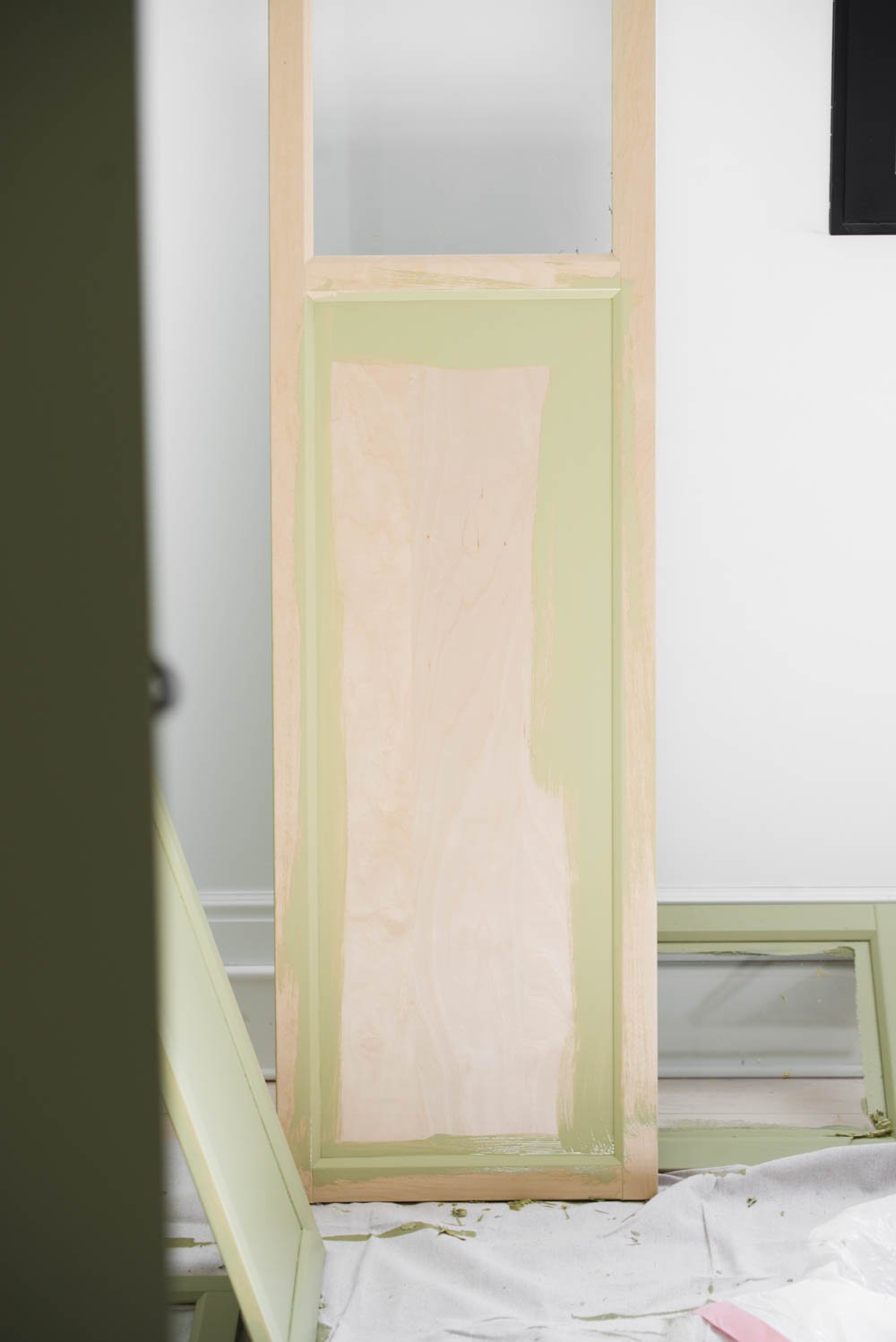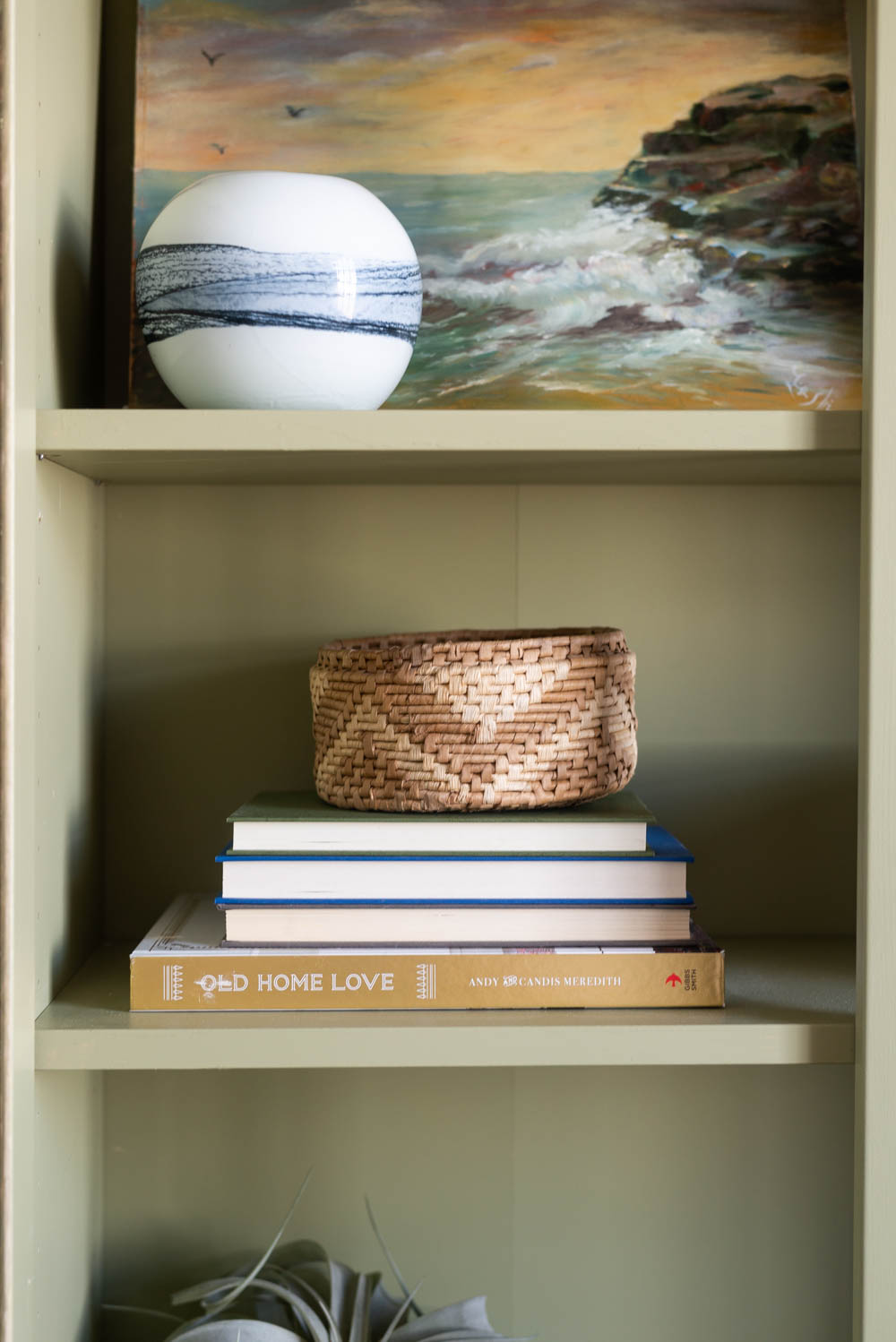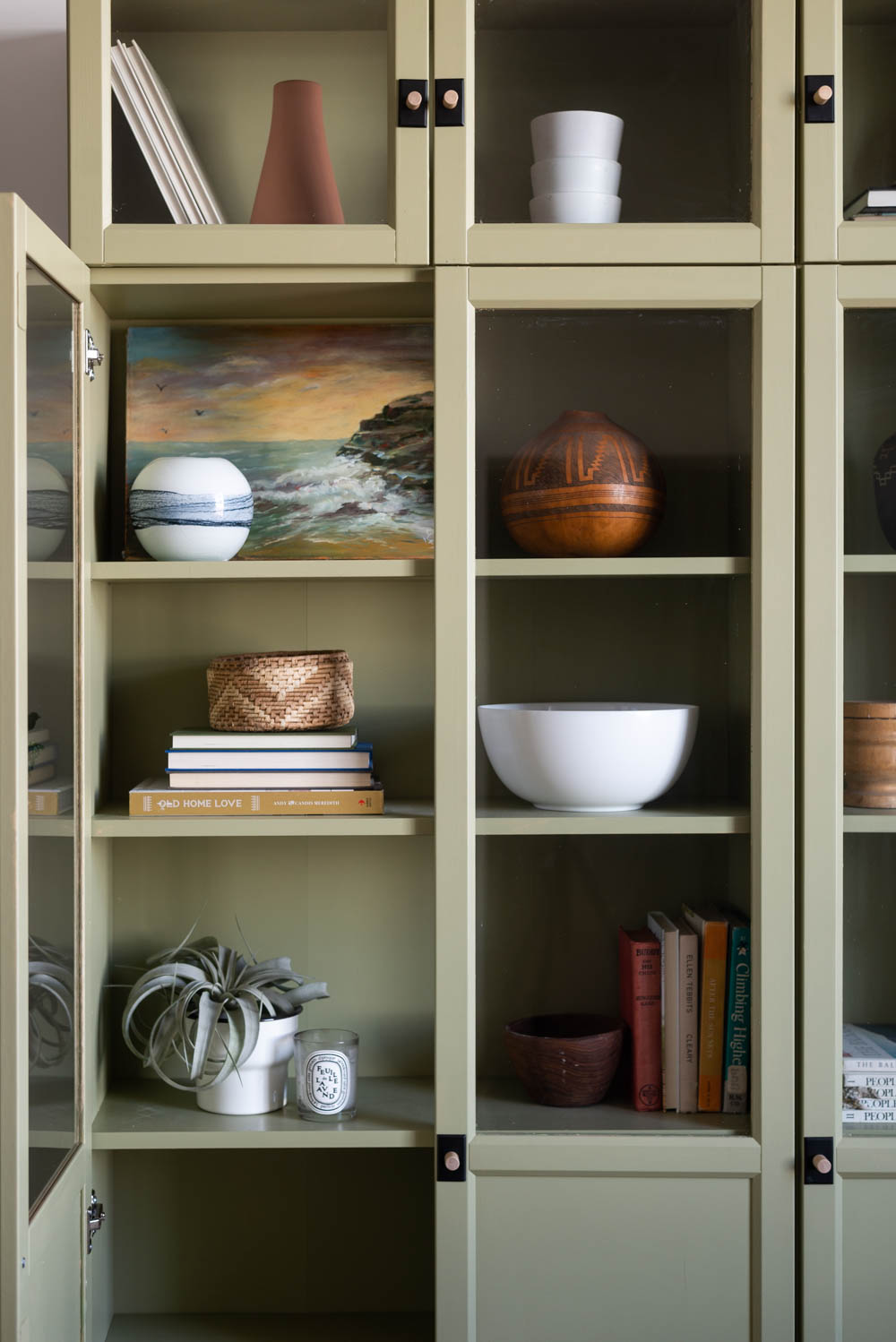Painting furniture is one of the simplest DIY projects on the planet. However, it is also one of the easiest things to mess up. Trust me, I’ve painted more furniture than I care to remember and have learned so much it will make your head spin. Today I’m passing all of my wood painting info along to you! I’ve teamed up with my longtime partner Sherwin-Williams®, who sponsored this post to give you THE BEST furniture painting information available!
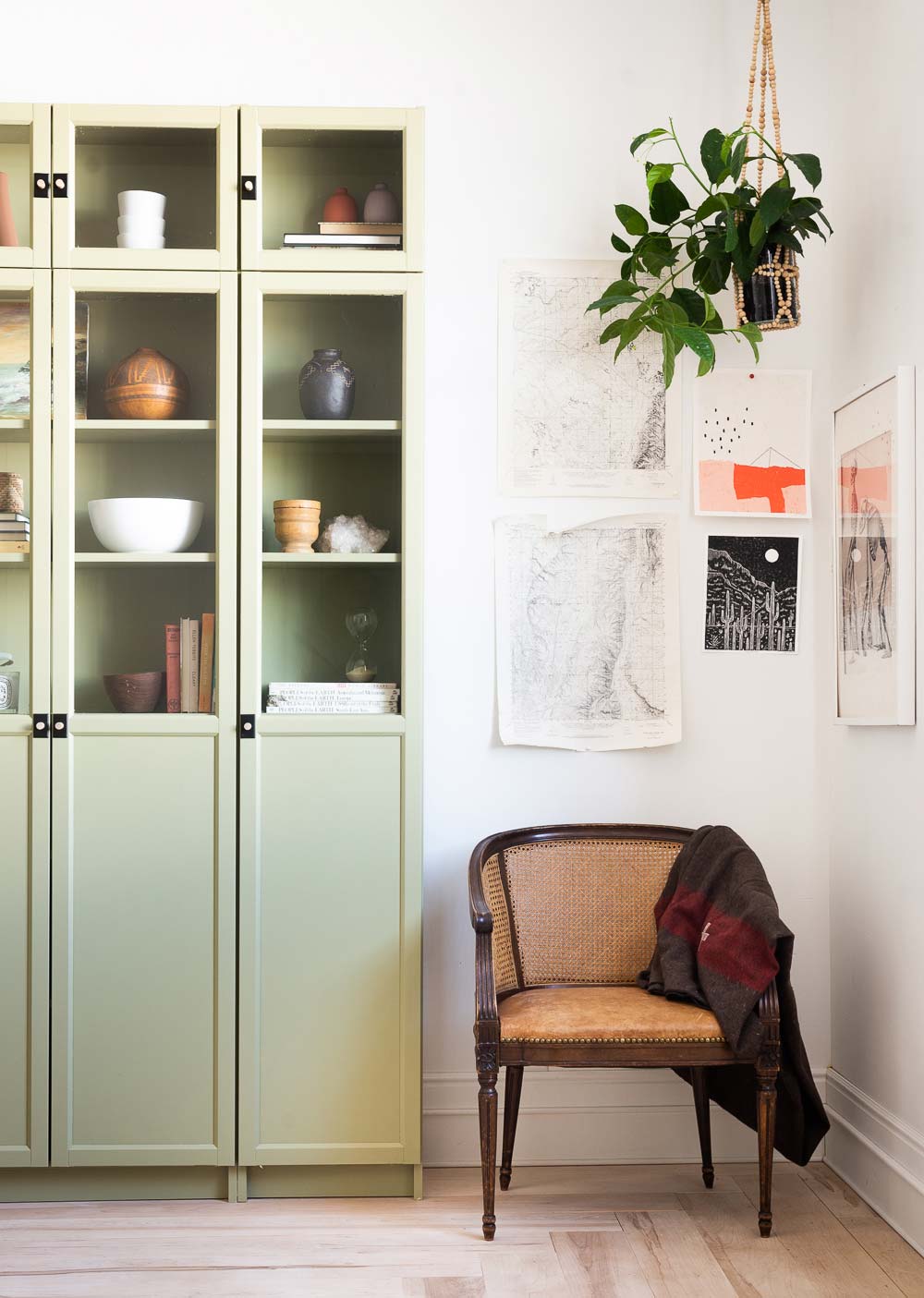
There are a million different sites telling you different (and conflicting!!) info. No one wants to learn to paint furniture the wrong way, or the hard way. So today I am sharing with you my absolute foolproof way to paint furniture. I have hundreds of reader questions at the ready and I’m going to answer all of them! (It’s a good thing that most of them are the same, see the most common at the bottom of this post!)
Furniture Paint vs. Wall Paint (NOT THE SAME!!)
Paint for some reason has this catch all mentality. How is it that we as humans have 15 different types of moisturizers, but paint is only allowed to have one formula? NO!! Regular latex paint is not designed for hard surfaces that get a lot of usage like a kitchen table.
If you’ve ever painted something and had the finish turn out tacky like it’s never cured, or had it peel off in sheets (so satisfying but not when it’s on your kitchen table) chances are GREAT that you went to the paint counter and told them the sheen and color but nothing was mentioned about the product type or project right?! Do you know how I know this?! Because I’ve done it…a few times! DANG IT!!!
You know you’re using the wrong kind of paint or the wrong technique if:
- Your furniture feels tacky or sticky like it’s never cured
- The paint dents
- The paint chips or scratches it peels off
- It’s extremely hard to clean and easily stains
- It fades
- It doesn’t have a smooth finish
- You want to kick it every time walk past because of all the horrible feelings that come up at the sight of it.
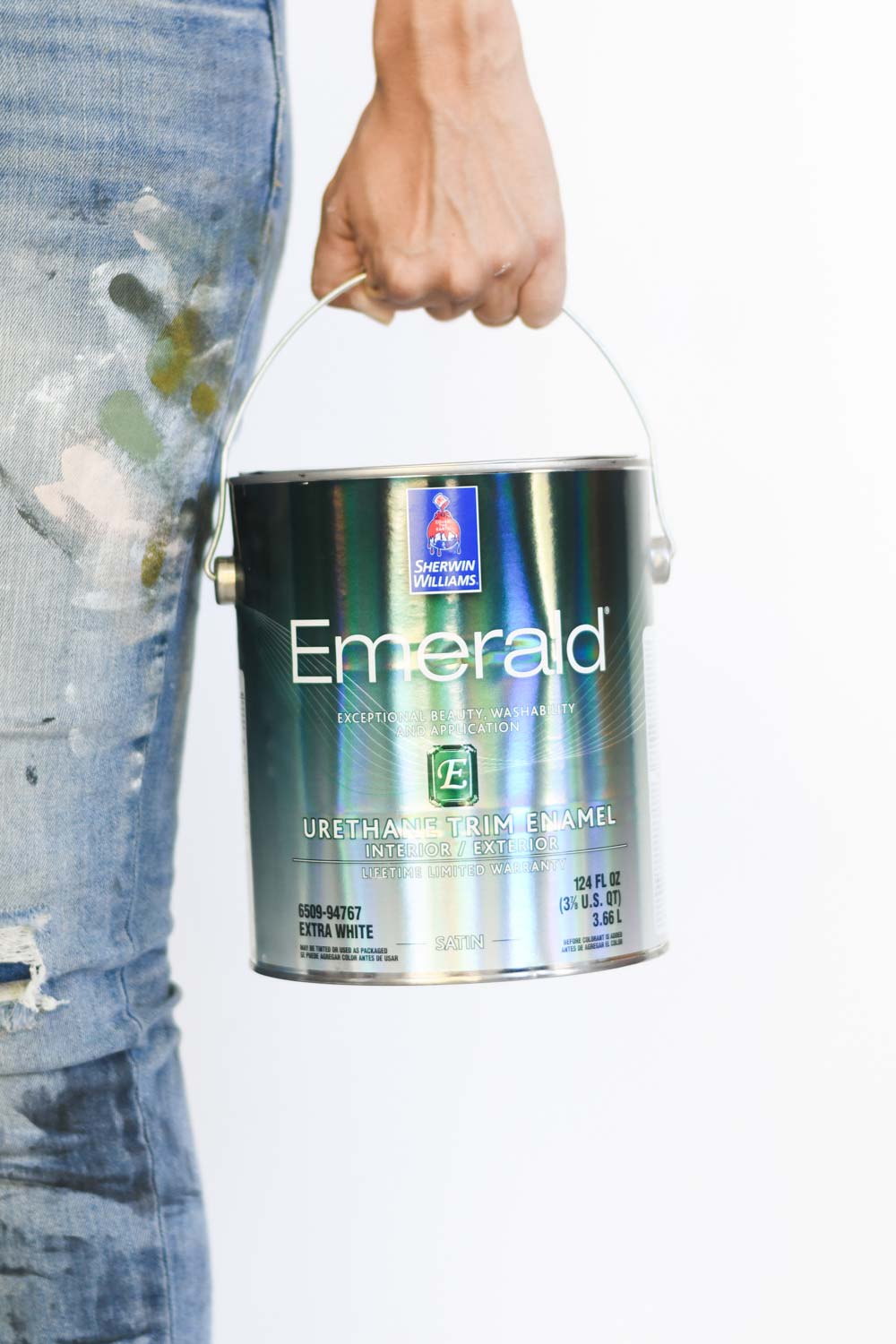
Best Paint for Furniture
Ok so now that I’ve established that you need the right kind of paint (we’re all on the same page here yes?!) let me tell you what the best paint for furniture is. Sherwin-Williams Emerald Urethane Trim Enamel (its a long title. We’ll call it Emerald Trim Enamel for short ok?) When you are painting hard surfaces, you need to use a product that is created for hard surfaces. If you’ve followed Vintage Revivals for a while you might remember the many proclamations of utter devotion for Sherwin-Williams Pro Classic. Pro Classic is awesome, but Emerald Trim Enamel is a newer product and my new favorite.
It is formulated for hard surfaces and it is MAGIC!! You don’t need to put a finish top coat on it, and if you are painting over a freshly sanded surface you can can choose not to prime but we always recommend priming your raw wood surfaces for an amazing end result! Oh and have I mentioned that when you’re using it you get a completely smooth finish with a roller? Mic drop.
Once you use the right kind of paint for your projects, you will NEVER go back to using regular latex wall paint.
You know you’re using the best kind of paint if:
- Finish is hard and unaffected by things on it
- Finish doesn’t dent
- Surface can easily be wiped off (for instance on a table)
- Finish chips rather than scratches.
- Finish is smooth
The color that I used on these IKEA Billy bookcase is Sherwin-Williams Ruskin Room Green SW-0042. Its the perfect muted dusty green and I am obsessed with it!
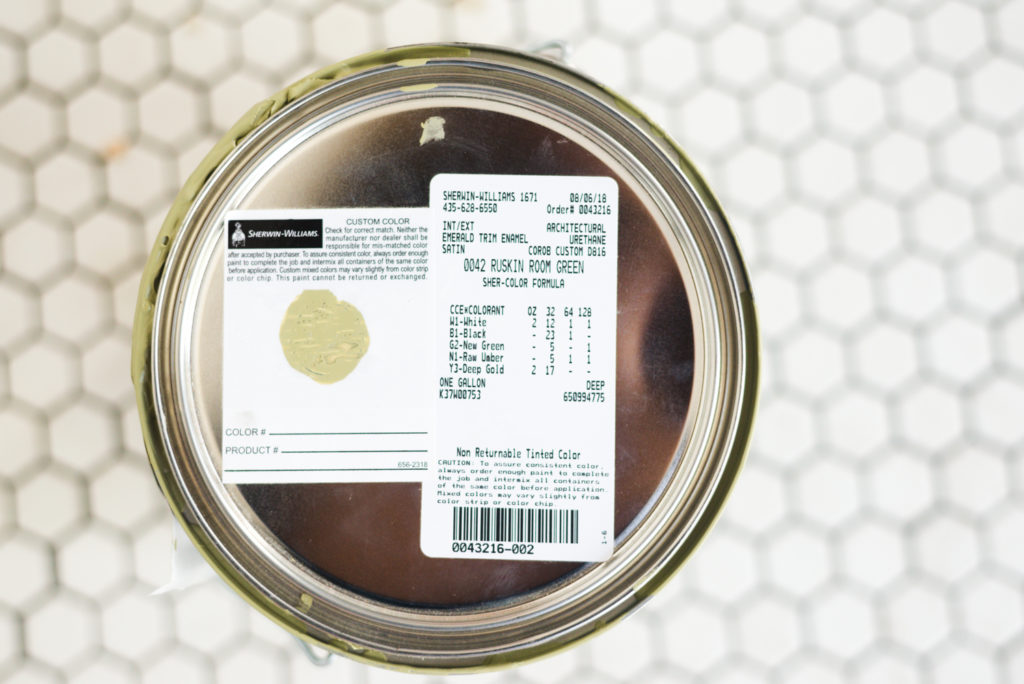
Painting Techniques
There are 3 acceptable ways of painting furniture; 4 if you live in 1992 and consider sponge painting a stylish way to bring character into your house. Painting with a sprayer, painting with a roller, and painting with a brush.
We used a paint sprayer when we painted the doors at the Merc and got a perfect mirror finish. But for the sake of relatablity and ease, today we’re talking about the other 2 techniques, rolling and brushing.
Brushing paint exclusively is a technique that I havent mastered yet (it’s on my bucketlist!) but using a good quality brush is CRITICAL. If you show up and are planning on painting a piece of furniture with one of those $2 chip brushes you might as well douse it in gas, light it on fire and save yourself the time. A good brush will cost around $15 and pay off in dividends.
Rolling a piece of furniture is my favorite technique. You have to make sure that you get the right kind of roller though, because if you don’t you will end up with a ton of anger inducing texture. Find a lint free roller that has a nap of 1/4″ or lower. Think about what happens when you’re actually rolling, the longer the nap the more surface is sticking in the paint right? The shorter the nap, the smoother the finish. HOWEVER. One of the most frustrating furniture painting pitfalls I’ve experienced is using a foam roller. The logic behind it is sound. The lower the nap the smoother the finish, so no nap means THE SMOOTHEST FINISH EVARRRRR! The problem with using a foam roller is flashing. Flashing is when the sheen is different (you can see a great example of it in this post!) My favorite roller for painting is a Purdy White Dove 3/8″ or a Sherwin-Williams Mohair. They are both awesome and will give you a great result!
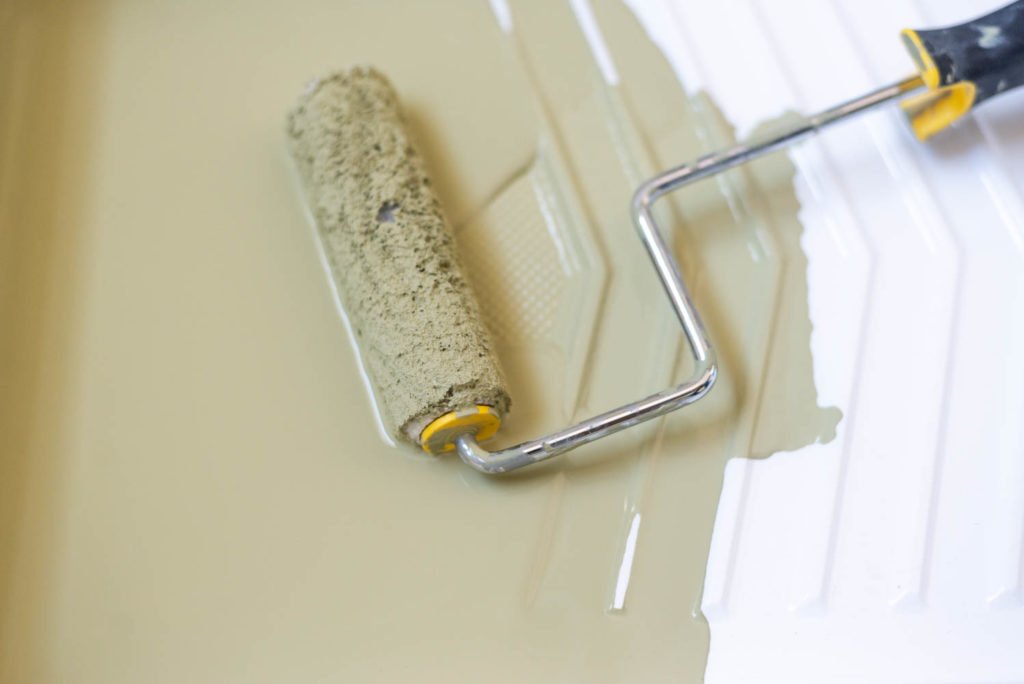
Painting Supplies
Once you know what kind of paint to use, and how you’re going to paint your piece, it’s time to round up the rest of your gear! (FYI all of these supplies are available at your neighborhood Sherwin-Williams store.
You’ll need:
- Paint Brush
- Paint Roller
- Roller tray
- Roller tray inserts (I promise they make your life so much better!!)
- Drop Cloth
- Paint stirrers
- Paint can opener
- Painters tape
- 220 Grit Sanding Sponge
- Paint Triangles
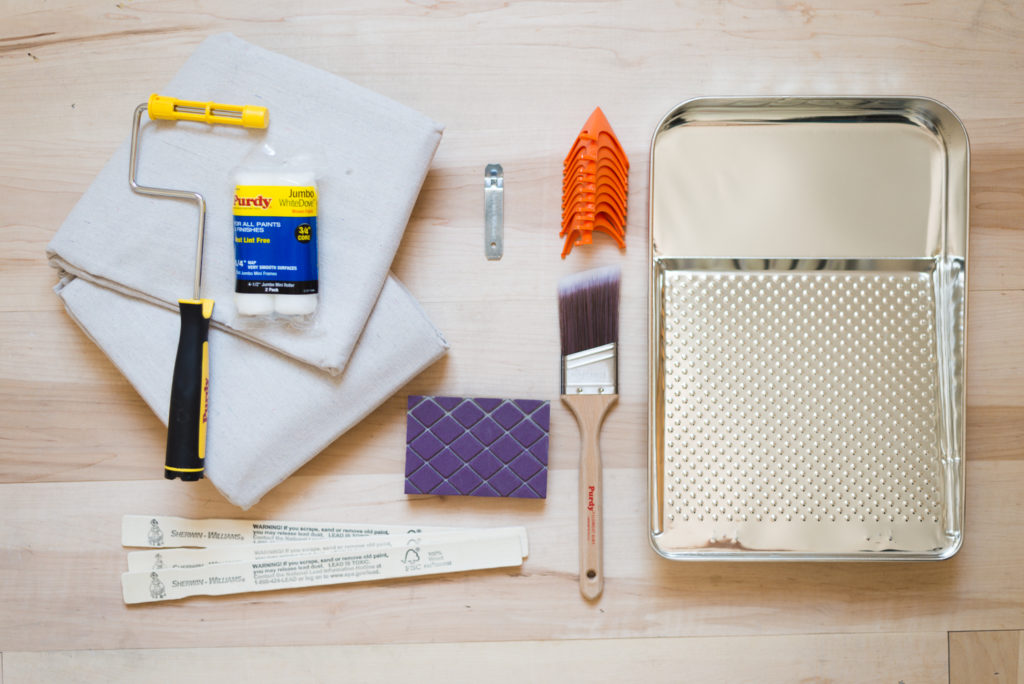
How To Paint Wood Furniture in 5 Steps
Ok are you ready to get started!? Let’s dive right into painting wood furniture!
Step #1 PREP: Sanding, Stripping, and Cleaning and Disassembly
The first step to furniture painting success is your prep. There are a million tutorials online that give you hacks for skipping prep, but guess what? If you skip it, chances dramatically increase that you’re not going to get the result that you want.
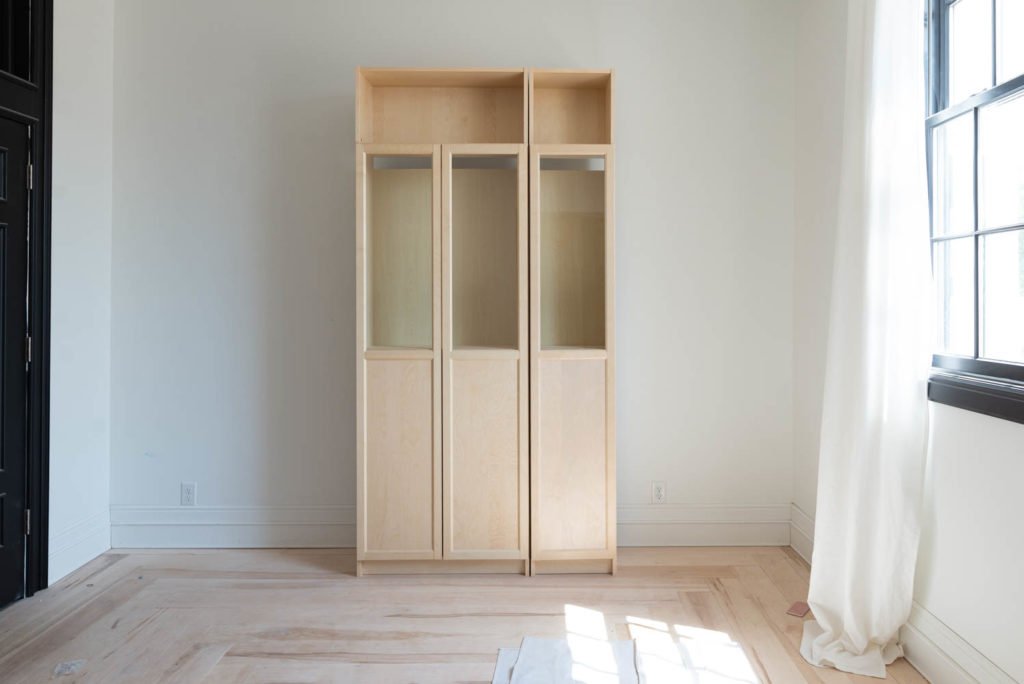
-
Cleaning always comes first!
Sometimes all your piece needs is a good wipe down. If you don’t need to sand or strip, using a strong cleaning agent like TSP or a good cleaner degreaser will get rid of a lot of grime. TSP is a powder cleaner that you can get pretty much anywhere paint is sold. It’s really aggressive, so if you use it you’re going to want to wear gloves. If you’ve sanded or stripped, use a damp microfiber cloth or tack cloth to gather any dust.
-
Sanding:
The thing to remember is that you don’t have to take the piece down to the raw wood, when you’re sanding you are taking out imperfections (like scratches etc.) and roughening up the surface so that your paint has something to grab onto. The more aggressively horrific the surface of your piece is, the more you and your sander are going to become acquainted. For newer pieces, like the IKEA furniture we’re painting in this post, a light sanding with a sanding sponge is plenty of prep. If you actually need to take stuff off of the surface you’ll want to use a sander and disk. I LOVE the reuseable Diabo SandNet disks. We’ve been using the same one for 5 months!!
WARNING! Removal of old paint by sanding, scraping or other means may generate dust or fumes that contain lead. Exposure to lead dust or fumes may cause brain damage or other adverse health effects, especially in children or pregnant women. Controlling exposure to lead or other hazardous substances requires the use of proper protective equipment, such as a properly fitted respirator (NIOSH approved) and proper containment and cleanup. For more information, call the National Lead Information Center at 1-800-424-LEAD (in US) or contact your local health authority.
-
Stripping:
Sometimes sanding isnt an option, like if your piece has a lot of detail that the sander can’t get into. This is where you tell your husband that you’re going to get a stripper and just see the reaction. #stripperjokes All joking aside, stripping paint is one of the gratifying DIY ever. There is just something about spreading the product on and watching the paint bubble and wipe off. The downside with stripper is that it can be really hard to get it out of the corners and grooves of a piece. I only use a stripper when absolutely necessary. That’s what she said.
-
Disassembly:
I always take furniture apart as much as I can before I start painting. Removing doors, hardware, and backs (if you can) makes it SO MUCH EASIER to get a professional finish (no one likes to open a drawer and see that they forgot to paint the edges!) If you’re painting a new piece like we are with our IKEA bookcases, we didnt even assemble them all the way before painting. Just make sure you put all of the hardware in a safe spot.
-
Taping
Once everything is cleaned and ready to go, now is the time for painters tape. Place it along the edge of your piece and use a credit card to burnish it into place. This will prevent any seepage and leaks.
-
Testing
To ensure success, you can do an adhesion test before priming. This will help you determine if your prep work was successful. In general, you want the surface to be clean, dry and dull before you start painting. To test for adhesion, apply a small amount of primer like Sherwin-Williams Extreme Bond to an inconspicuous area. Allow it dry properly and test to make sure it adhered to the surface well. Once you have determined good adhesion, you’re ready to prime and paint the piece.
Step #2: Cutting In
If your piece has trim or moulding on it, you’re probably going to want to cut in first. Cutting in is when you use a brush to paint just the corners of things before you paint the whole piece. Sometimes (depending on the piece) you don’t have to cut in, but if you do make sure that you feather the edge of the paint onto the rest of the piece. If you don’t you’ll end up with a hard paint line and some serious texture.
Step # 3 Rolling The First Coat of Paint
OH MY GOSH ARE YOU READY!? Here it is, the big moment. Start by loading your paint roller with a medium amount of paint. You’ll know it’s too much if you can’t see a lot of the texture, and too little if you see all of the spaces between fibers. The right amount looks full but not saturated.
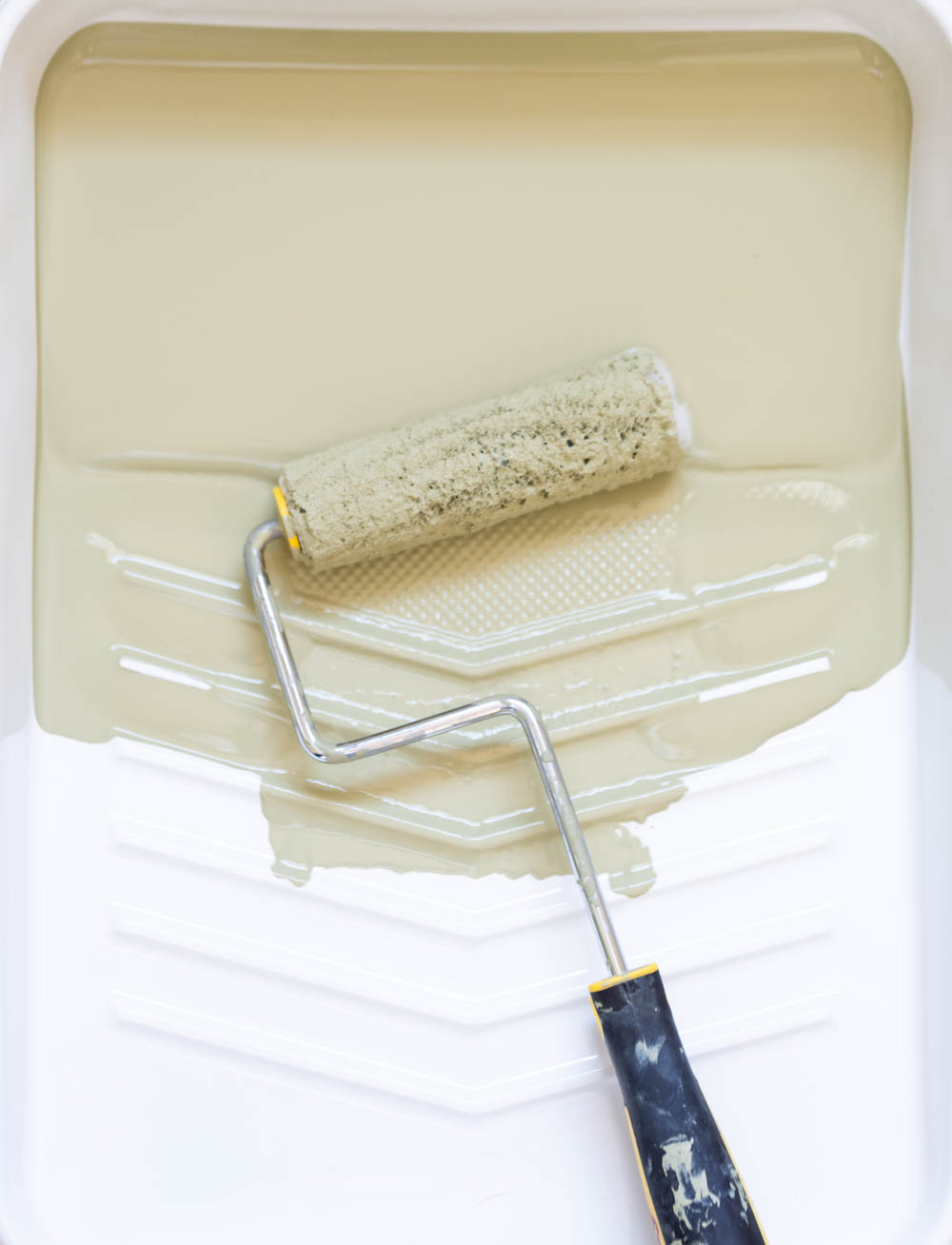
Move your roller on the piece with even pressure, moving in the same direction the whole time. Be cautious to no over do it.Make sure that you are watching the edges and don’t leave big mounds of paint on them. Once the coat is on, put your roller down and STEP AWAY FROM THE FURNITURE.
The biggest mistake that people make when they are painting a smooth surface is that they fiddle and touch and try to fix every imperfection.
Once your paint is on the piece it’s begun the drying process. Friends, if you are messing with it keep in mind that it’s still drying, it’s just not drying flat. If you over brush or roll it, you’re just adding texture, which we don’t want. As it’s drying, if you notice a spot you missed, leave it for the second coat. If there is a drip, wipe it immediately. If you notice it as the paint has already started to dry just leave it alone, you will make it worse!
So much can be fixed between the first and second coats, don’t make your job harder by fiddling with it.
There is going to be a little bit of texture until the paint dries. Just let it settle. I PROMISE it is going to be fine!
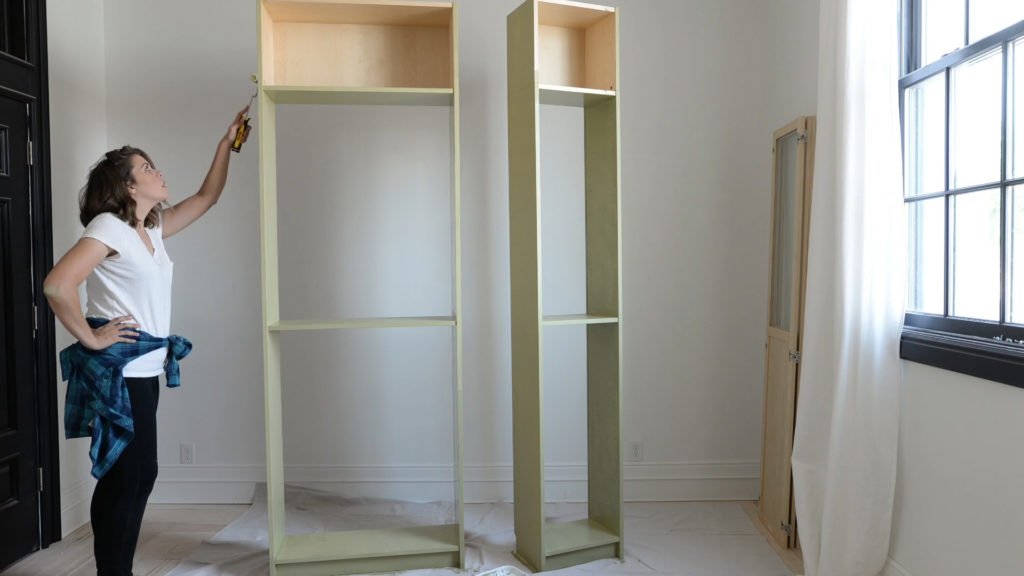
For reals though, have you stepped away? Cause you need to do that. The paint will darken as it dries. After it is dry (usually about 15-20 minutes) you can gently touch up the mistakes that you exercised great restraint to not fix before. Go you!!
Step #3 TOUCH UP: Sanding Drips or Texture
Oh now it’s time to fix those mistakes. using a 220 grit sanding sponge, gently sand away the issues, whether it’s a drip, or a hair, or a texture issue. Wipe that spot down with a damp microfiber rag to get the dust!
Step #4 PAINTING: Roll The Second Coat and Let It Dry
Step #4 is just like step #2, you are going to roll the paint and let it dry. Make sure to leave it alone! (Are you sick of hearing that yet? Cause it’s REALLY important to leave it alone.)
Leave it alone. (That’s the last time I promise)
Step #5 Final Touch Ups and Reassembly
Once coat #2 is dry, you are free to touch up the piece as necessary. Sometimes you need to sand it, and sometimes you dont! Please keep in mind that even though your paint has dried, it hasn’t cured. Meaning, its dry and you can touch it, but until it’s cured you can still scratch it or chip it easily. When I was putting my piece back together I got a pretty gnarly scratch on it that needed to be touched up so I sanded it and fixed it. I always try to wait at least a few hours before I put it back together to give the paint a chance to start to cure.
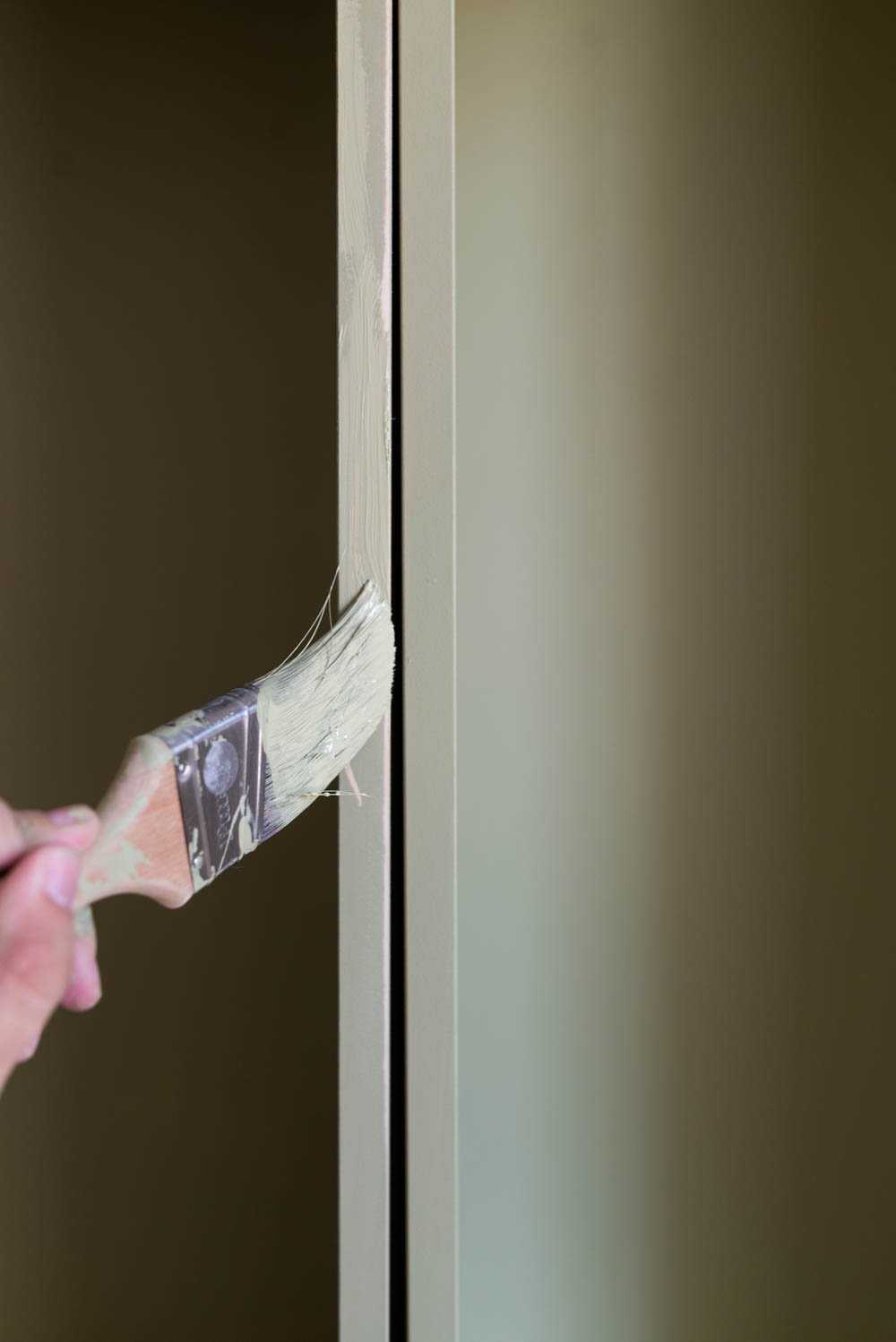
Painting Tips
Painting around glass
I’ve been known to start a project without adequate supplies on hand. Sometimes the mood just strikes you right?!! One day I was painting a piece with mirrored doors and I didn’t have any painters tape, so I just brushed over the glass and was happily on my way. When it came time to get the paint off of the mirror I was kicking myself for not having tape, but figured out a pretty cool hack that I wanted to pass along. If you get paint on your glass, swipe over it a few times with a damp paper towel and give it a minute to sit. Then go back over it with a razor blade and it will literally fall off the glass!
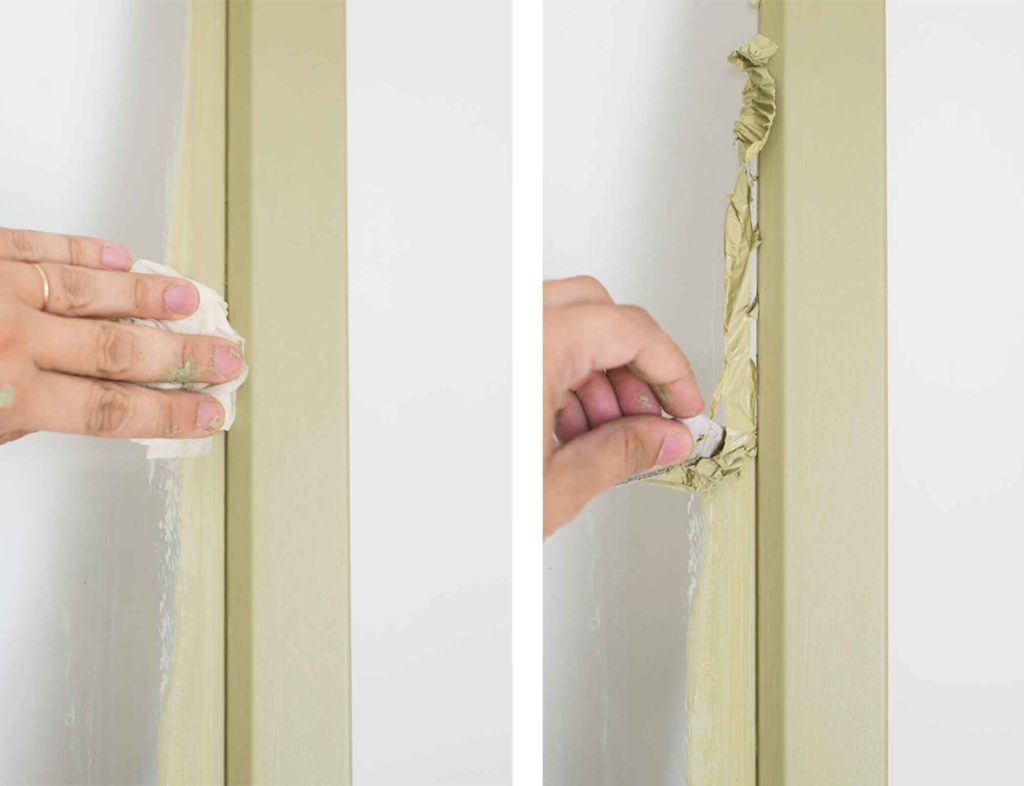
Storing Your Paint Mid Project
Look, I get it. We’d all love to be productive enough to get a project done in one sitting, but reality, and 2 year olds and school pick up happen and then its 3 days later and I’ve ruined my brand new paint brush because I got distracted and forgot to put it away. Just me? One of my favorite tips to keep paint fresh for days on end is to put the whole tray, brushes and all, into a garbage bag to seal the air from getting to it.
Paint Pyramids
These handy little buggers are worth their weight in gold. Use them when you’re painting things like cabinet doors, or smaller pieces to lift them off of the ground.
And when it’s all said and done, you’re left with a piece of gorgeous furniture and a perfect paint job THAT YOU DID YOURSELF!! High fives all around!!
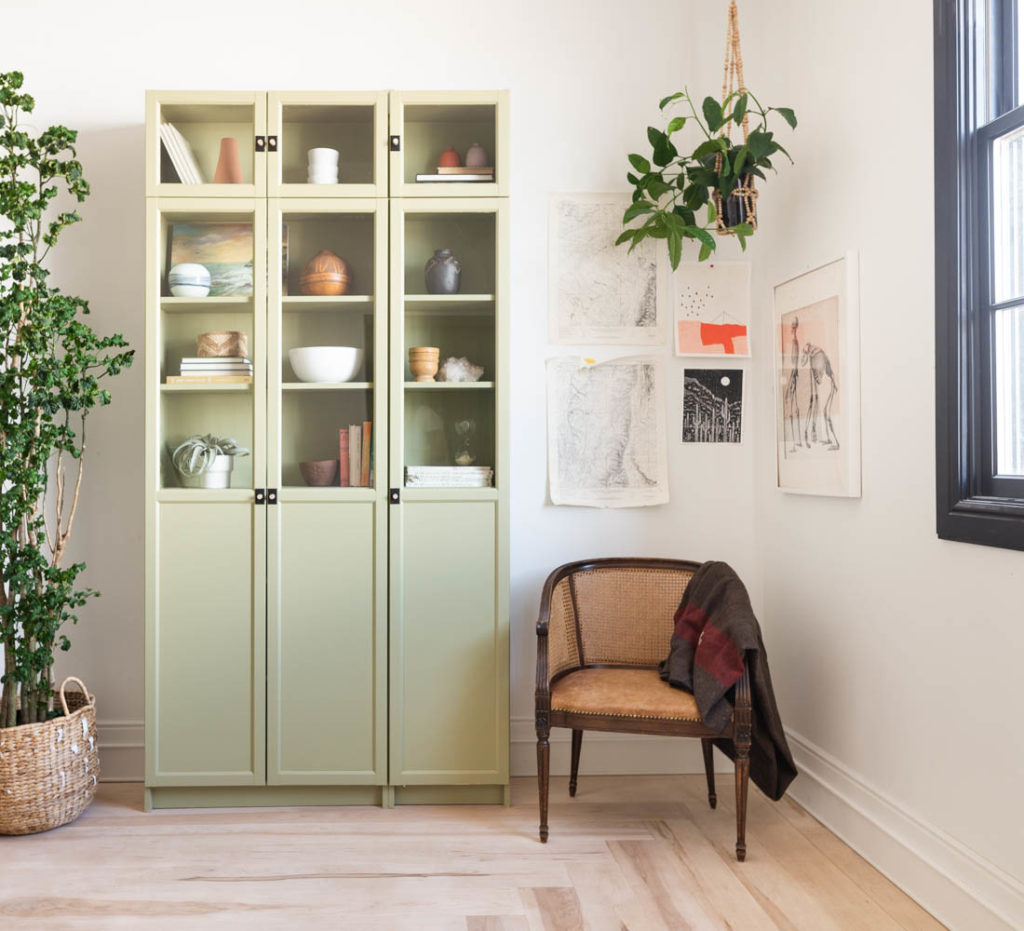
Real Life Questions
I asked what your most frustrating furniture painting problems were, and man did you guys deliver with the questions! Let’s answer some of the most common ones, shall we?
“After days of drying, things would stick to the top. To this day I’ll have things stick to the top of the table 4 years later! Why?”
This is one of the most common questions I get, the reason things are sticking is because it’s not a paint created to dry hard. Touch your walls (it’s ok, no one is looking!) does the paint feel hard? Nope! Using the right kind of paint, like Sherwin-Williams Emerald Trim Enamel is the best way to avoid eternal stickiness!
“The spray paint I used left a matte line, even though the paint was high gloss”
This is called flashing and it happens when the paint color is uniform, but the sheen is not. It can happen for a few reasons but most commonly happens when the product is applied inconsistently, either too much or too little.
“I painted a pine dresser white last year and it’s starting to yellow where the knots are! Why and what can I do?”
Ugh this is so frustrating. It seems to happen most with pine. The resins from the wood are concentrated in the knots and has started seeping through the paint. The best way to prevent this is to use a stain blocking primer or a shellac primer. Make sure that you get a nice good coat on and then scuff sand it without taking it all off.
“I hate when I can see brush strokes or foam roller strokes from whatever I use.”
Man I hate that too!! Using a sprayer is definitely a way to prevent that in it’s entirety, but using the right kind of brush and roller will help a ton!
Now for the best part! I’ve got a whole video tutorial on How To Paint Furniture! Check it out below!!
If you’re ever planning on painting furniture, make sure you save this post to your Pinterest board so that you can come back as often as you need to!
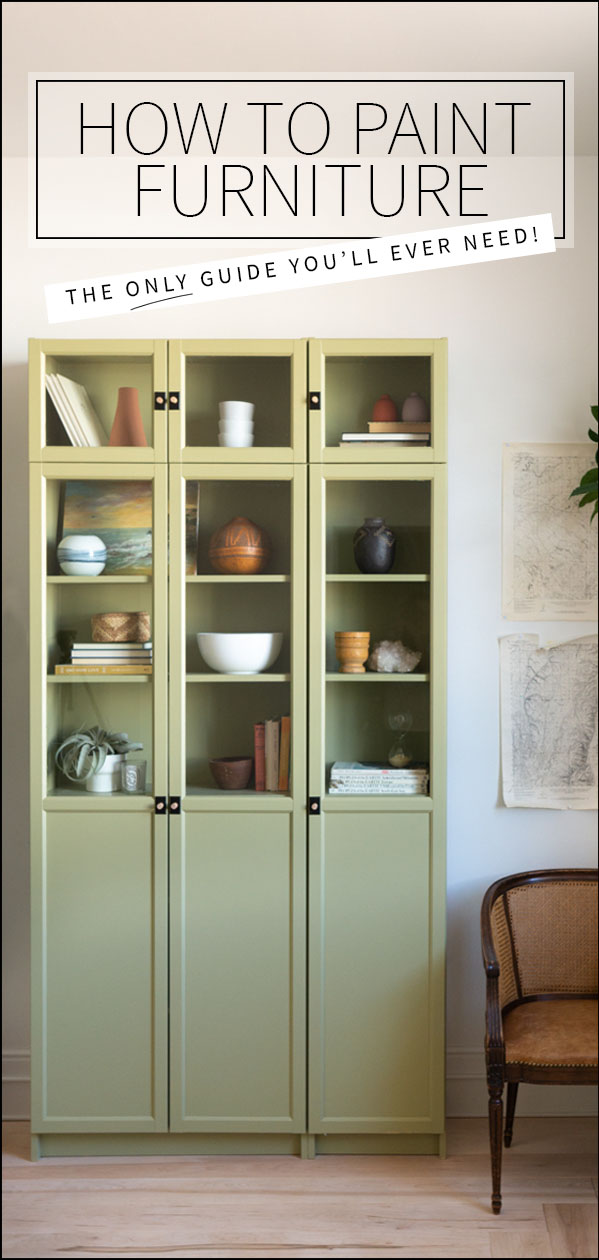
Have any questions? Leave them below and I’ll answer!!
You might also want to check out:
How to Paint A Crib (and is it safe to paint baby furniture!?)
How to Paint Laminate Furniture
The post How To Paint Furniture appeared first on Vintage Revivals.
via Mandi at How To Paint Furniture
